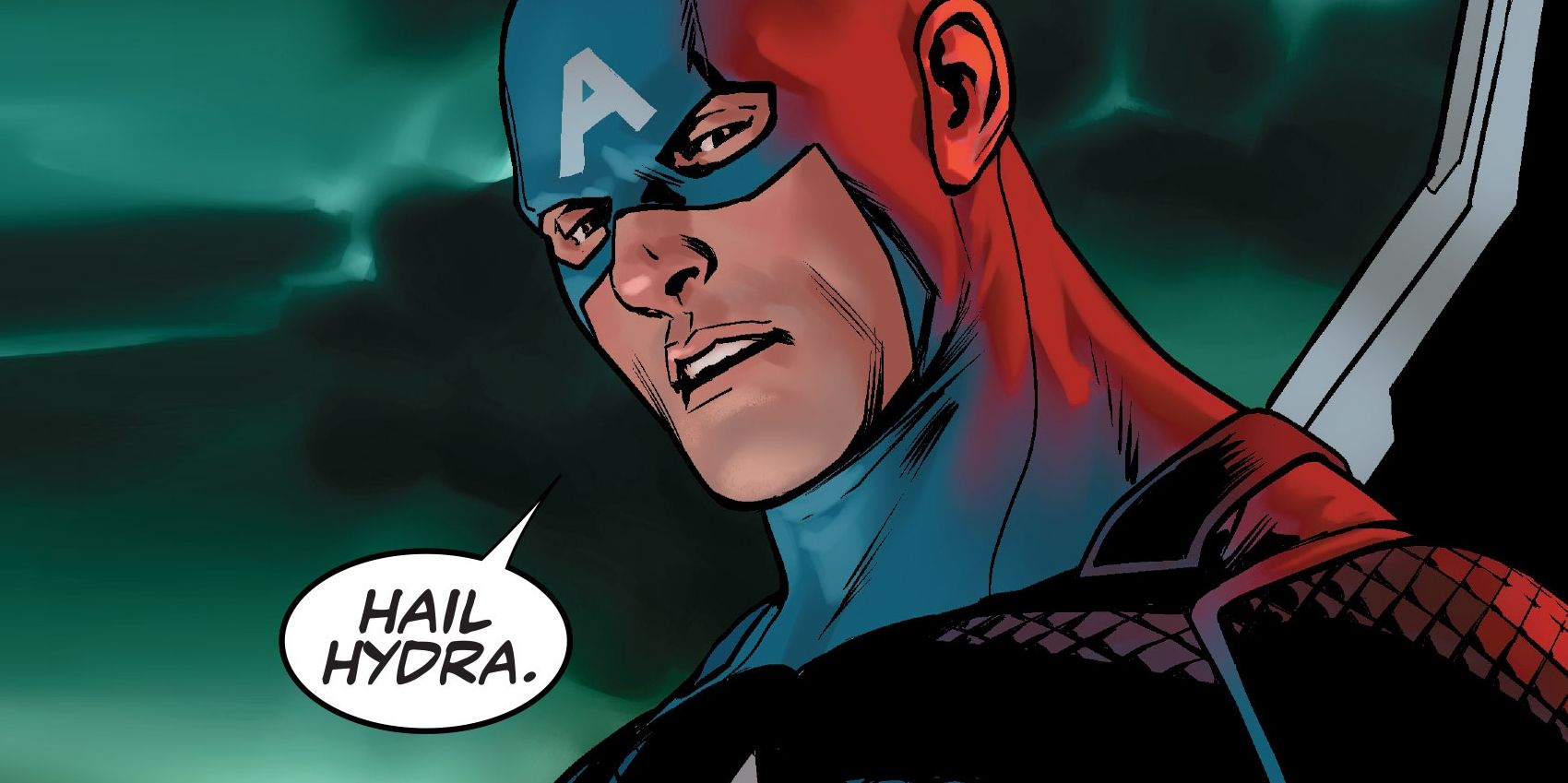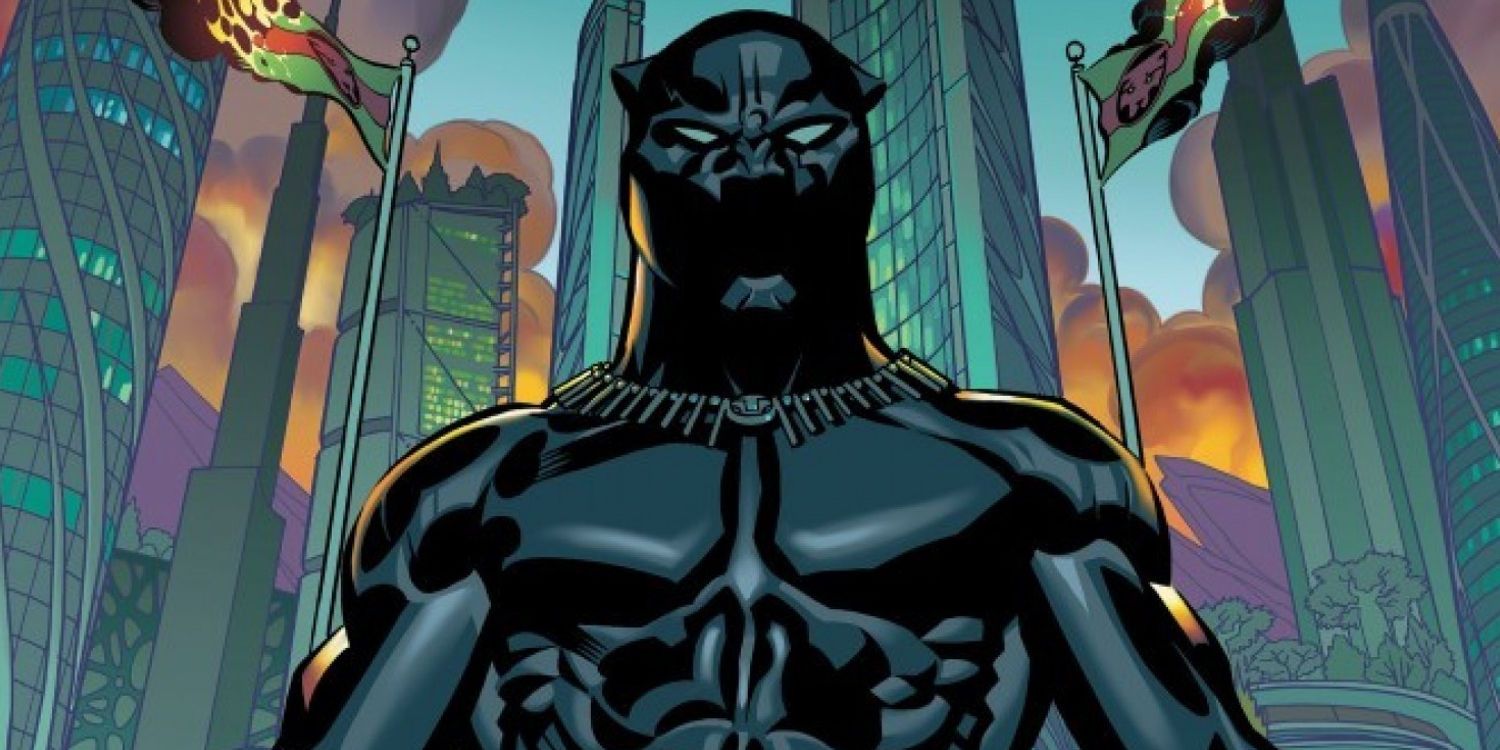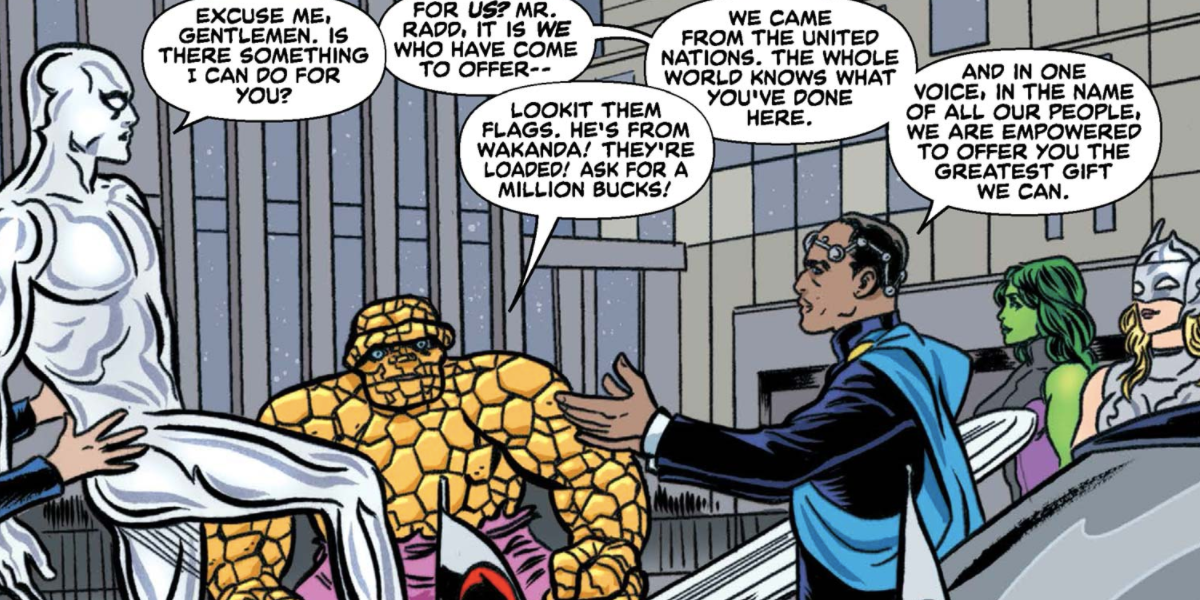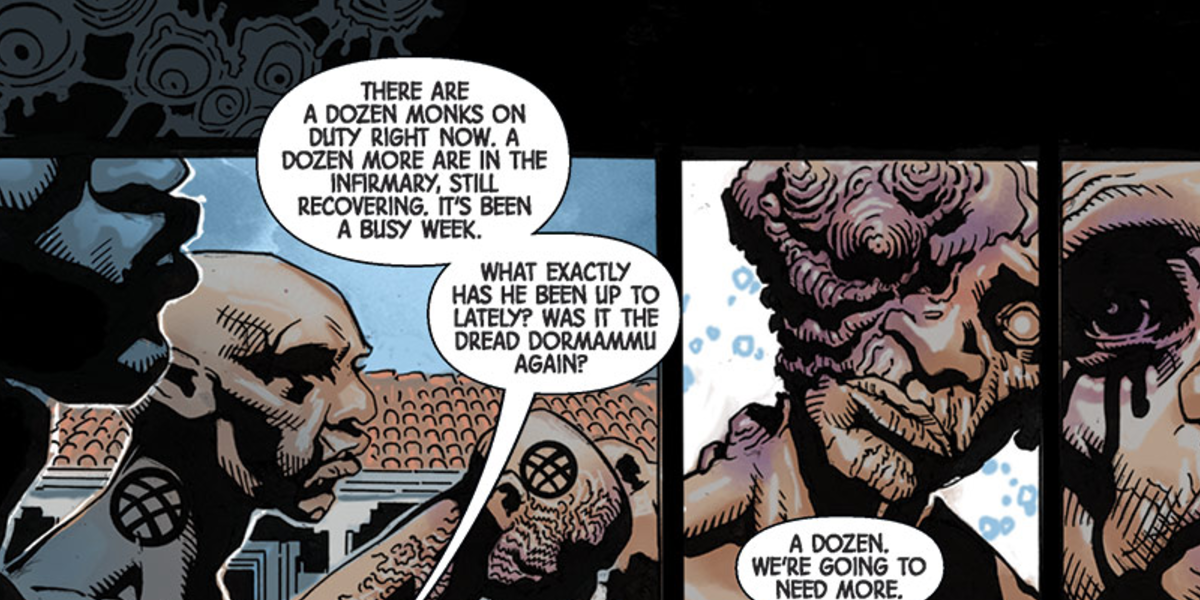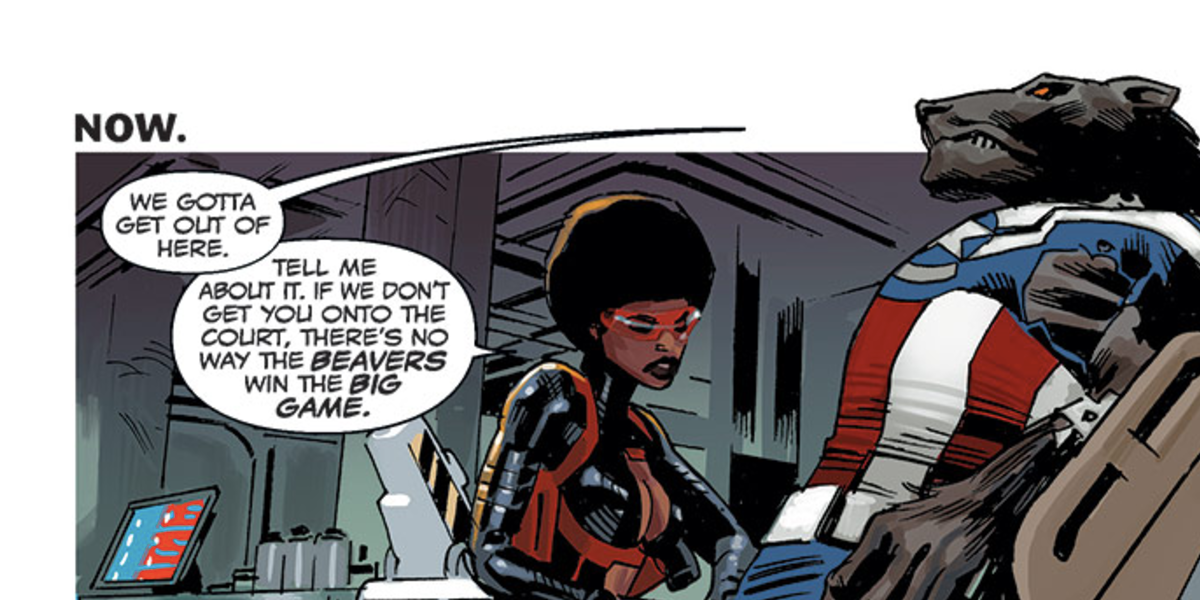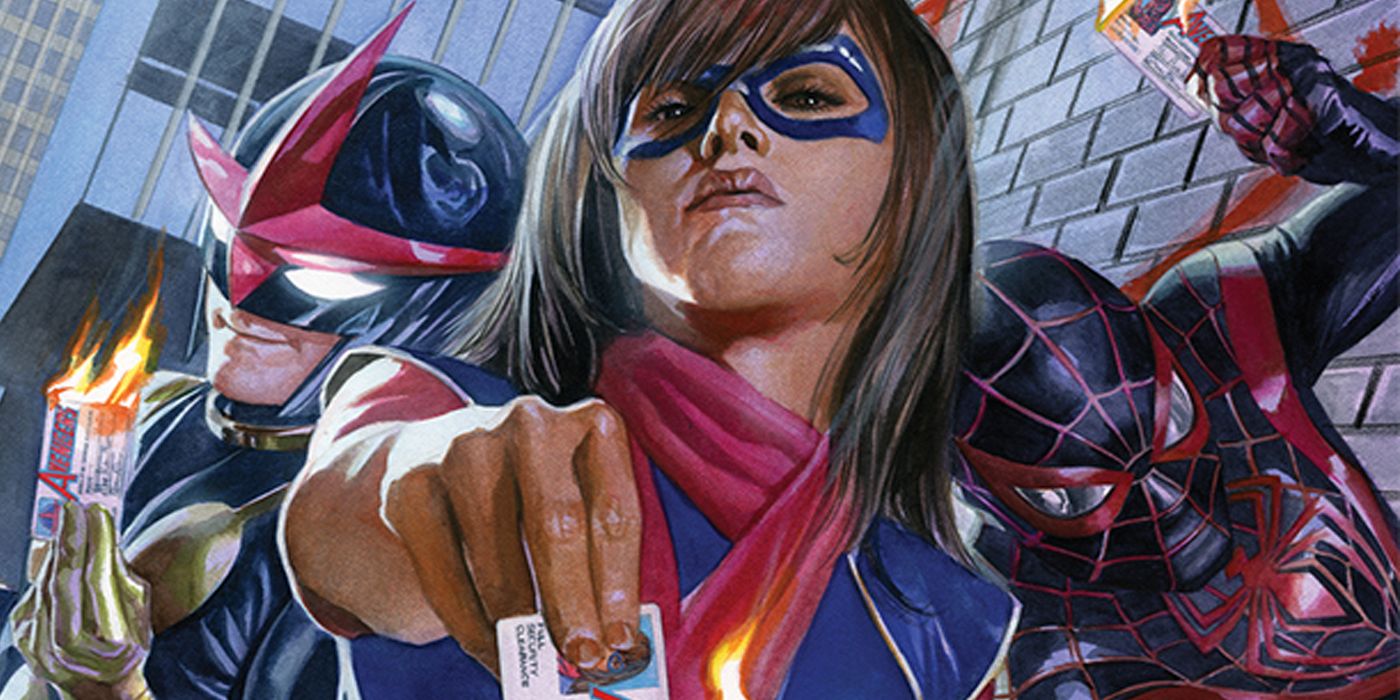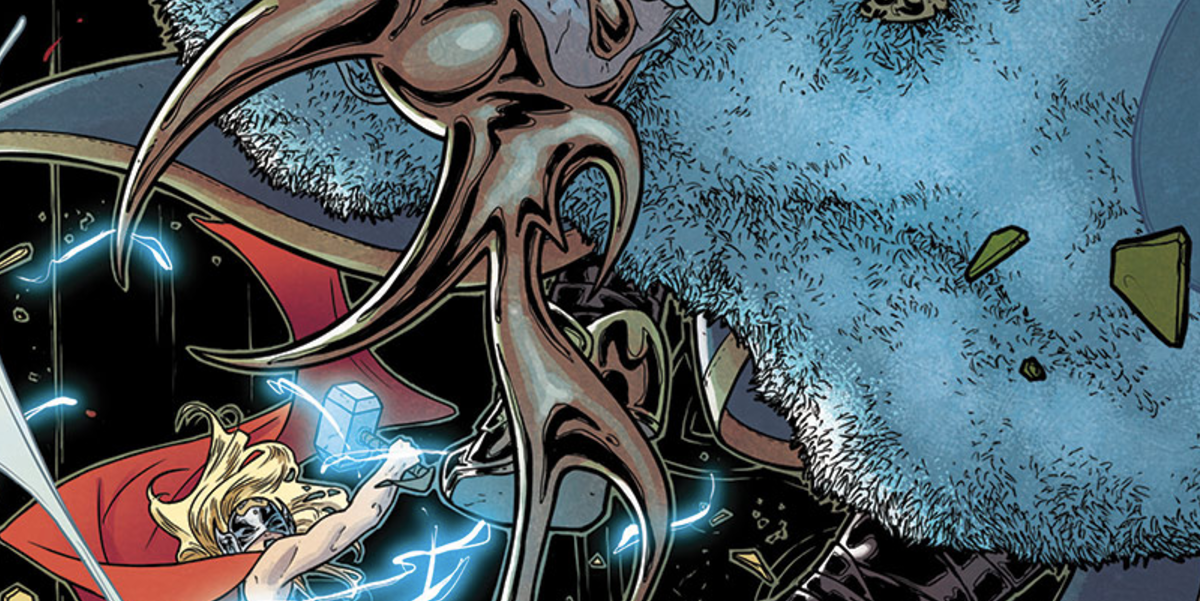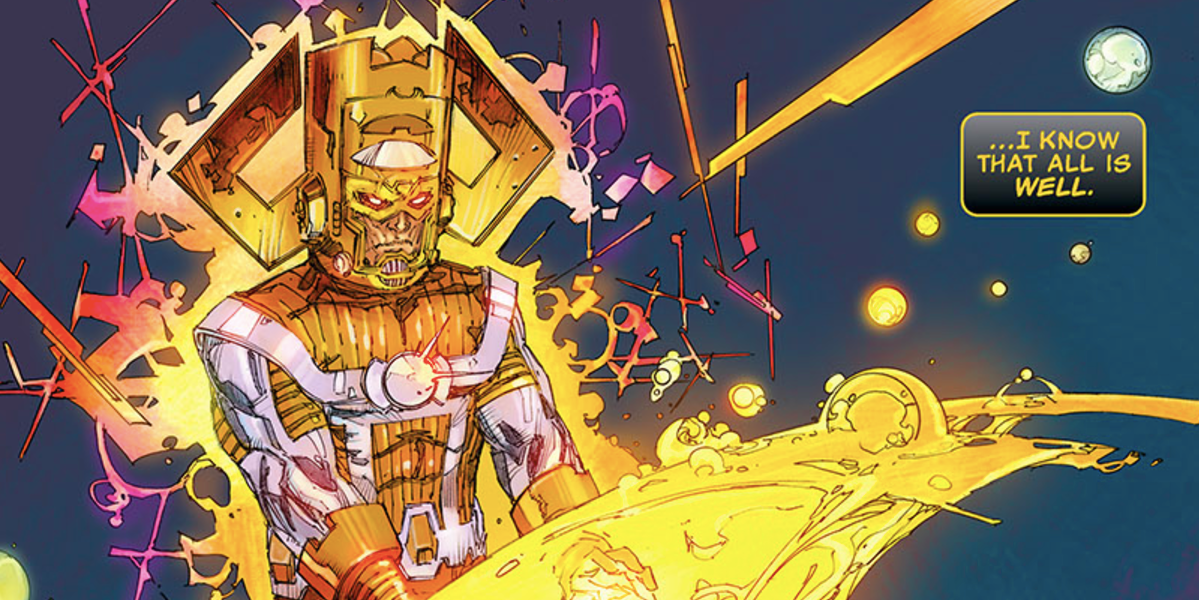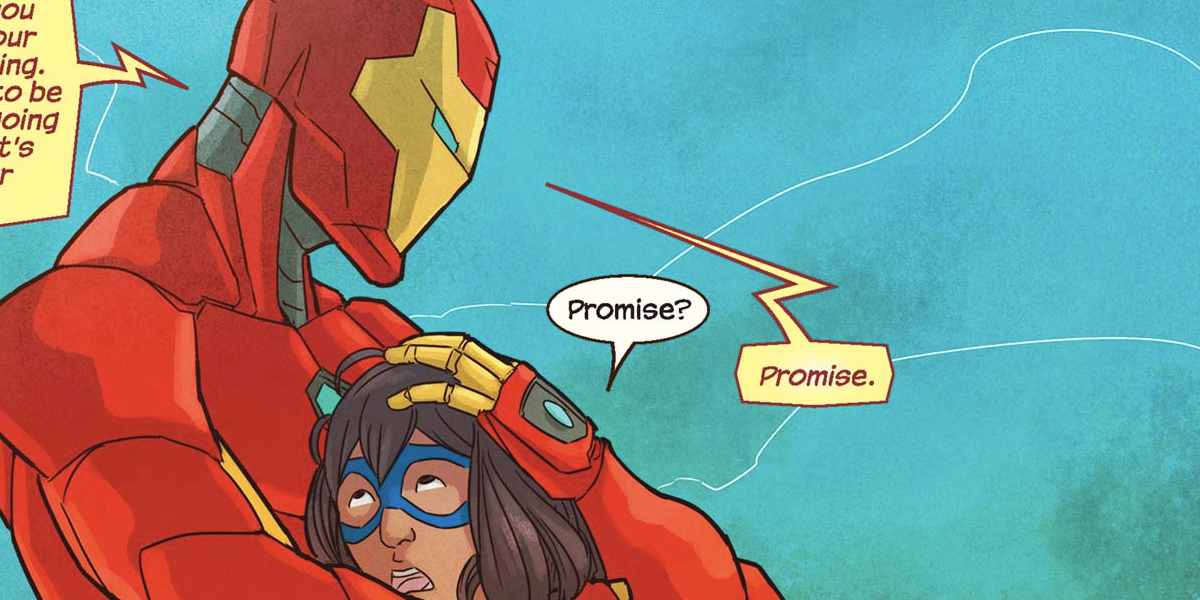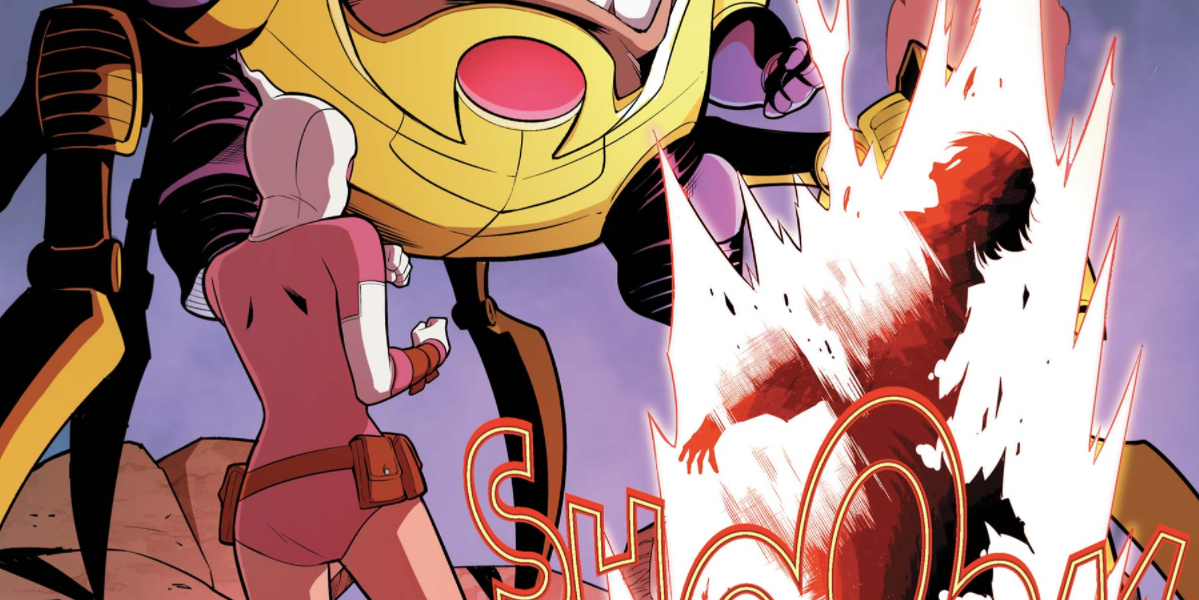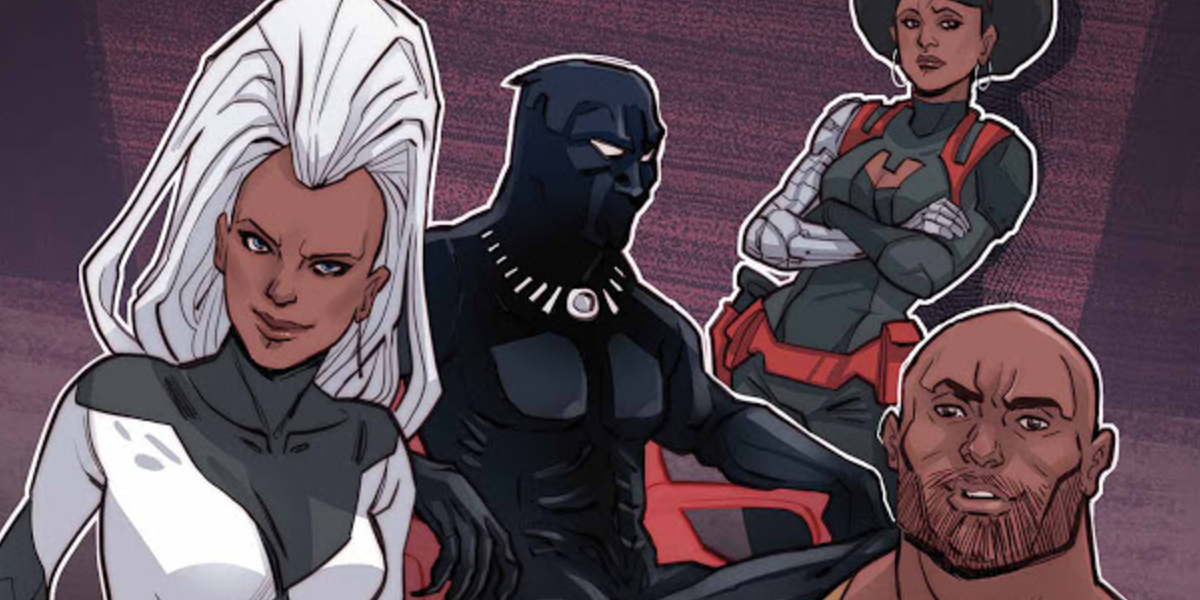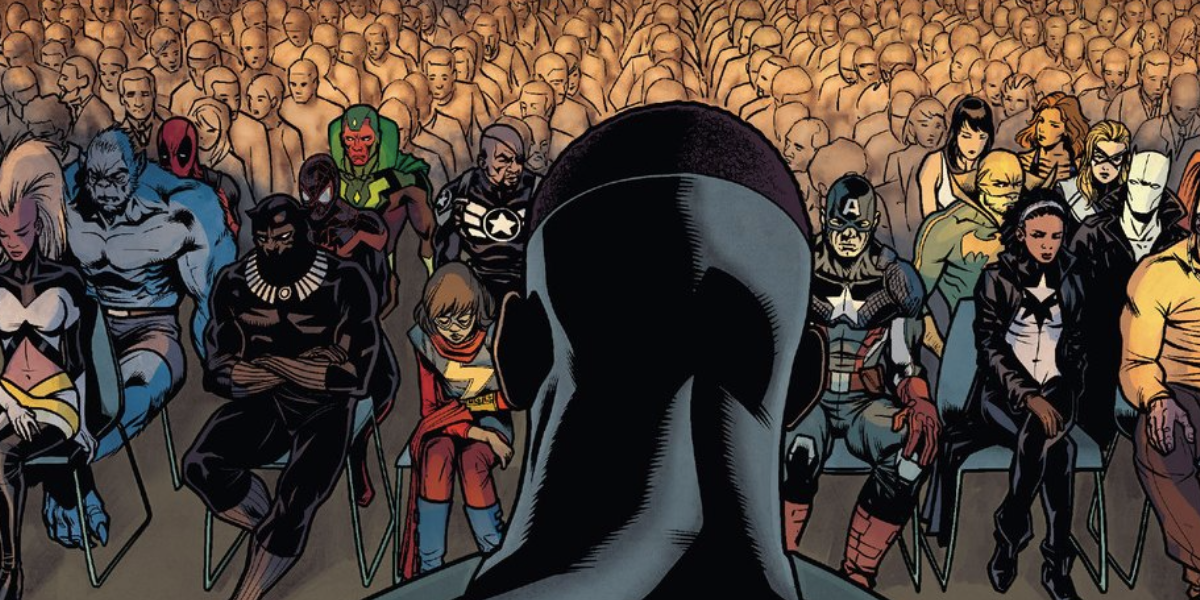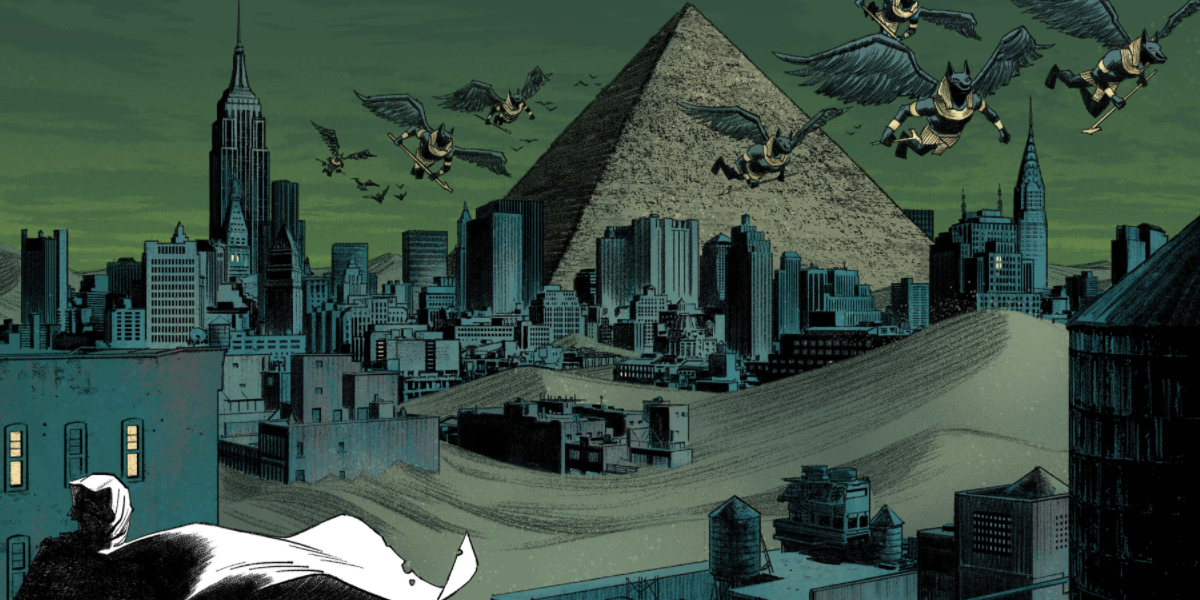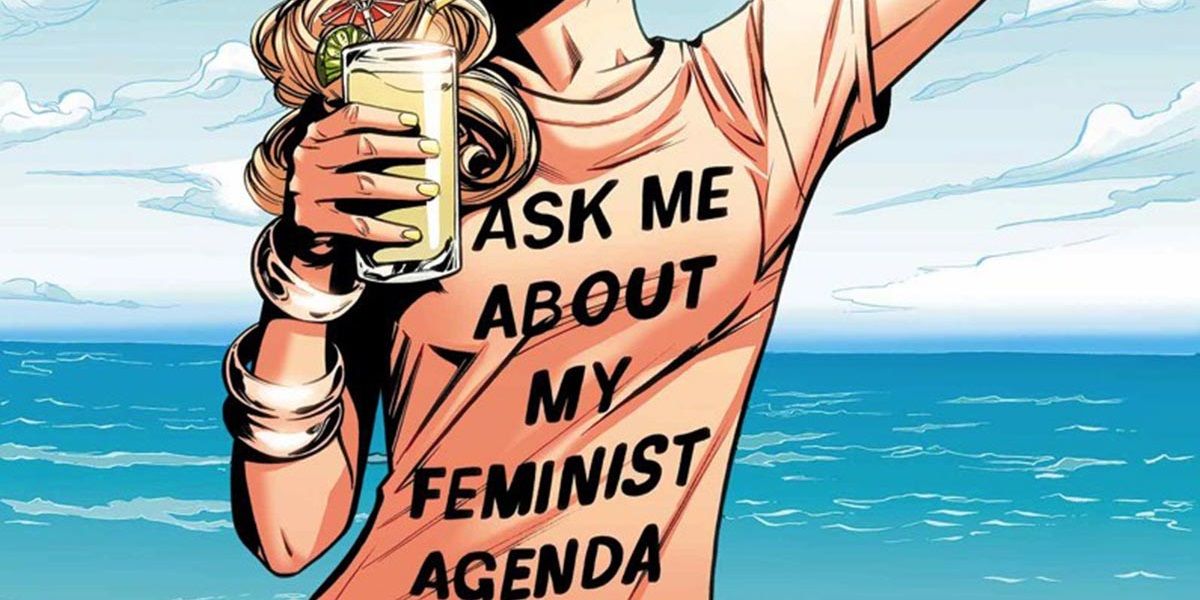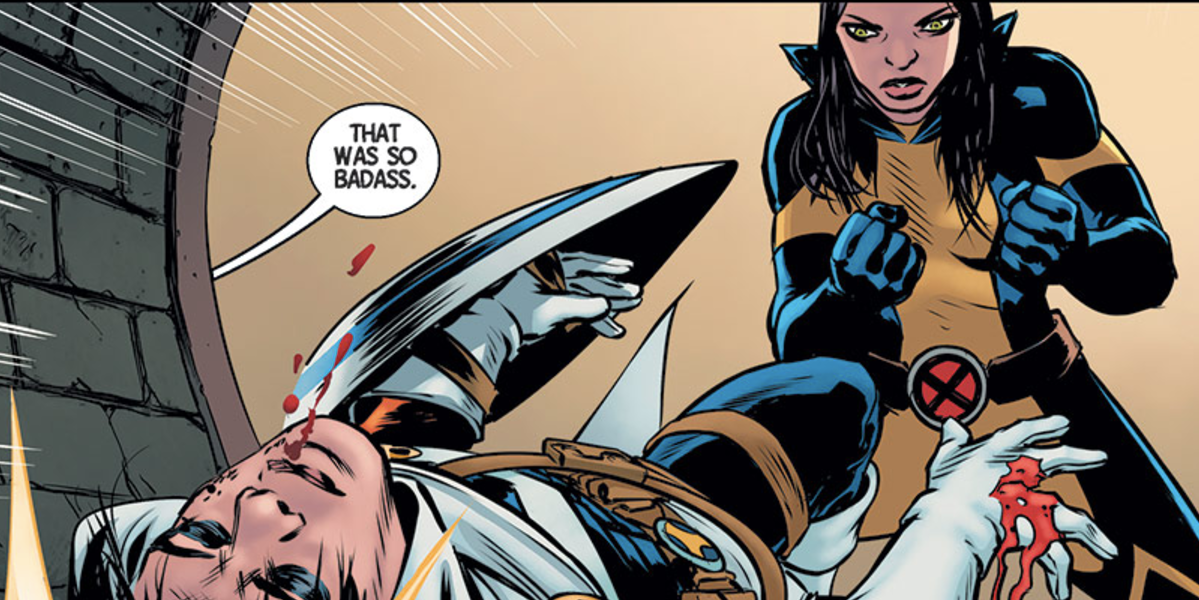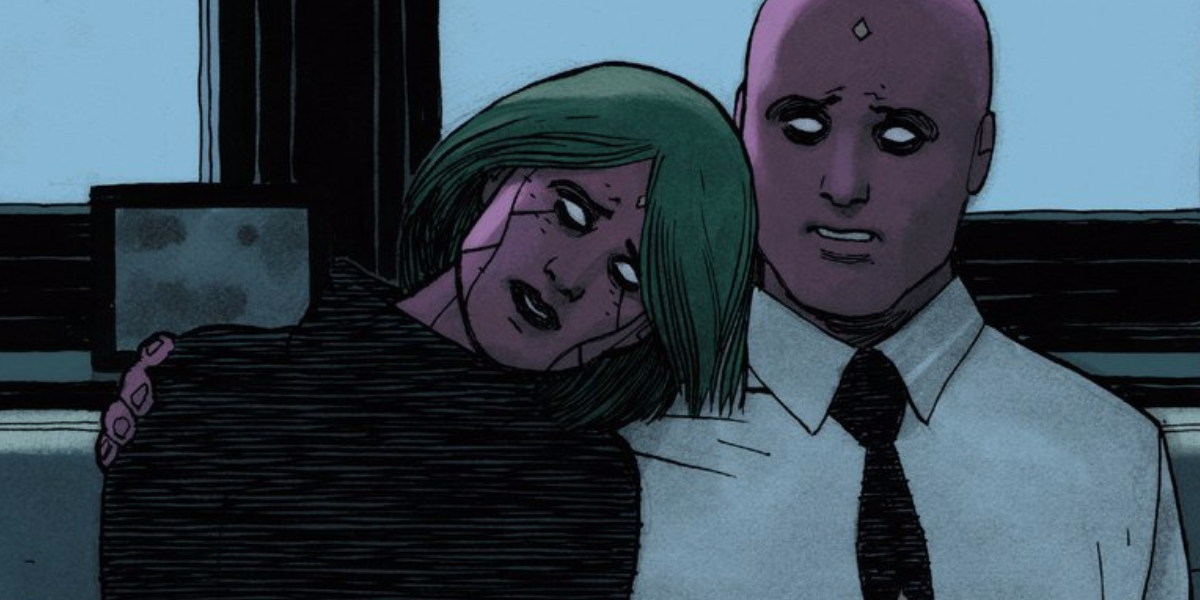If you're reading this, you're probably aware that Marvel Comics did what Marvel Comics does now and then, and relaunched its cast of colorful do-gooders and their crooks with a fresh polish. What sets the All-New, All-Different Marvel apart is that, this time, the entire universe got a hard reboot instead of, say, everyone getting tossed into a "pocket universe" a-la Heroes Reborn. An event called the Secret Wars saw Doctor Doom remaking all of Marvel's reality as a universe in which Doom reigned as an omnipotent god. Through a bit of sheer luck, a handful of heroes led by Reed Richards were able to mount an assault on this reality and reboot the Marvel Universe without Doctor Doom as its god, which is a win for everyone.
As is bound to happen with an experiment this size, not everything about All-New, All-Different Marvel has worked. Civil War 2 has been a mixed bag, and the reception to some of the Secret Wars fallout has been understandably cool. But there's been a lot of good decisions too. Established mantles like Thor and Wolverine have fallen to new, less-experienced characters, and it's been great fun seeing how they've handled the pressure of being some of earth's mightiest heroes. Here are the 15 Best Moments In All-New All-Different Marvel - So Far.
15. Silver Surfer gets adopted by earth
Technically, the current Silver Surfer is a holdover from the pre-All-New, All-Different run, but it makes the list because Dan Slott and Mike Allred's ongoing adventures of the Surfer and his human companion Dawn is brimming with bottomless creativity and deeply felt humanity. Nowhere was this more clearly seen than when the Surfer was banished from his own race for standing with humanity against an alien invasion. An army of refugees from the Surfer's home planet of Zenn-La attacked earth, intending to erase all human culture and replace it with their own. The Surfer stood against the assault and saved humanity, but was punished for this betrayal by being cast out from his race.
What followed was a truly touching moment, in which earth's leaders gathered to offer him citizenship to their own countries. It was a symbolic close to the Surfer's rocky history with earth and the beginning of a very sweet new friendship.
14. The Dark Side of Doctor Strange
Jason Aaron's run on Doctor Strange has been an imaginative, frequently disturbing look at how the Doctor Strange sausage gets made, showcasing some of the rules the Sorcerer Supreme has to abide by and the prices he's had to pay for breaking them. It seems Strange has long been under the impression that he can cast all the magical harm that comes to his body onto a giant, ugly mutated beast in the cellar of his Sanctum Sanctorum. He is only half right. Unbeknownst to Strange, his assistant Wong has rallied a secret sect of magical practitioners who willingly absorb the curses Strange brings on himself. These monks pay a sick price — serving as a sort of substitutionary atonement with eyes that turned to blood and skin that breaks out in rotted boils — so that Strange can continue to defend humanity from the magical forces that oppose it. It was a shocking and sad revelation.
13. CAPWOLF
There's a lot to love about Nick Spencer's tale of Sam Wilson, the high flying Falcon, learning to bear the immense weight of Captain America's shield, but one of the best moments was also one of its most bizarre. In a delightful throwback to a truly terrible Captain America story from the 90s in which Cap spent four (4!) full issues as a werewolf, Sam Wilson gets the same treatment.
Although it's not often associated with his current, more grounded characterization, Cap has some mighty strange history. It's nobody's fault really, as the 90s were an awful terrible time for most comics, but turning the Sentinel of Liberty into a werewolf was pretty unforgivable. So it was a brave move on Spencer's part to return to it, and a smart move to do so with his tongue firmly in his cheek. The whole story is immeasurably helped by the presence of Misty Knight who, instead of reacting with shock and screams, cuts loose with an endless stream of jokes.
12. Champions
Civil War 2 has been a pretty mixed bag so far; a rehashing of its infamous predecessor that hasn't succeeded in finding much new ground to cover besides a lot of supposedly intelligent people making very dumb decisions. In fact, the kids are about the only ones showing any sense at all, which is why Champions is so refreshing. It's Marvel getting back to something that's always proved to be fertile ground: teenagers learning to balance great power and great responsibility.
After Miles Morales, Kamala Khan and Sam Alexander realize the heroes they've idolized for years are acting like idiots, they strike out on their own to form the Champions, joined by a teen Scott Summers from an alternate timeline (of course), Amadeus Cho as the new Totally Awesome Hulk, and the Vision's artificial daughter, Viv. In an era in which America's youth seem to be displaying a lot more level-headedness than the grownups, Champions feels strangely fresh.
11. Thor Punching Odin in the Face
This entire list could just be moments from Jason Aaron's legendary Thor run, in which a cancer-stricken Jane Foster secretly wields Mjonir while the actual Odinson finds himself mysteriously unworthy. Aaron's been writing Thor for a while now, and has taken Marvel's Asgardian Avenger to heights he hasn't seen in ages. But just when it seemed like he had almost nowhere else to go, he gave topped himself by turning the God of Thunder into the Goddess of Thunder, and every issue has been a delight. If you're gonna go with just one moment from the series, it's gotta be the jaw-dropping splash page in which the All-Father of Asgard finally gets what's coming to him by way of an eternally well-deserved Uru fist sandwich right to the divine kisser. Everyone knows what it's like to ask "Why, God?" Jane Foster's the first to go up there and demand some answers.
10. The Ultimates Turn Galactus Into the Lifebringer
For as long as there's been a Galactus, he's been an omen of death and destruction, rolling into planets like a force of nature and leaving them barren, empty husks after devouring their life force. So it was a risky move on the part of the Ultimates — a team of galactic overachieving do-gooders comprised of the Blue Marvel, Captain Marvel, the Black Panther, Miss America and Spectrum — to go on the offensive and take the fight to Galactus' giant ass front door. With the use of a cosmic piece of technology and a little deus ex machina finger crossing, they managed to turn Galactus into a "lifebringer": a cosmic entity who restores life to planets instead of taking it away.
It was a shocking reversal of longstanding fortunes and daring changeup of one of Marvel's oldest rules, matched only by a later issue in which Galactus recruited the Ultimates to be his new "heralds" of life.
9. Iron Man Lets Ms. Marvel Off the Hook
G. Willow Wilson's Ms. Marvel continues to be one of the true delights of the Marvel Universe; a real throwback to the Silver Age where Marvel's heroes were mostly ordinary people who get caught up in extraordinary experiences. Kamala Khan might have the most fully realized civilian life of any Marvel hero since Peter Parker, and that's what makes her superhero life such a kick. Whether she's saving New Jersey from Hydra with the help of her crush's boyfriend Mike or supervising her brother Aamir's "non-dates", we care about Ms. Marvel because we care about Kamala.
This was best realized in a sequence in which Ms. Marvel inadvertently set in motion a Jersey City war between a giant clone of herself and a Tyrannosaurus Rex (it's even better than it sounds). The events lead to a mea culpa between her and Iron Man, who lets her off the hook with a rare display of fatherly affection and forgiveness. It's a reminder that superhumans are at their most super when they're most human.
8. Gwenpool Loses Her Sidekick
Christopher Hastings and Gurihiru landed on a terrific concept: a comic book fangirl named Gwen from our world who gets sucked into the Marvel Universe and takes on a superhero identity because she believes (correctly?) that everything always works out for good guys in the end. So armed with nothing more than whatever weapons she can get her hands on, her meta knowledge of Marvel Comics and a pantsless (obviously!) costume, she takes on evildoers as Gwenpool and has all sorts of goofy, laugh-out-loud funny hijinks ...at first. But Gwenpool turned a corner when M.O.D.O.K. killed a computer hacking sidekick she'd recruited to her cause, and it sunk in that there were real stakes to the game she was playing. Hastings provides balance to all the out-and-out wackness of his concept by dropping in moments of real emotion and feeling, taking what could be a lark or, worse, just a Pink Deadpool ripoff, and making it something surprisingly profound.
7. "Hail Hydra."
You won't find a more controversial moment in Marvel Comics this year than Steve Rogers' declaration of allegiance to the Neo-Nazi terrorist group he'd spent his life fighting — or he had, before some cosmic juggling rewrote his entire existence as a covert Hydra agent. You're probably familiar with it (you've at least seen the memes, right?), but in case you need a little backstory: It turns out that the same cosmic cube magic that gave Steve his Super Soldier Serum back was part of a long con by the Red Skull to transform Captain America into a Hydra covert agent.
Fanboys were furious. Writer Nick Spencer got death threats. But given the events of the past few months, a Neo-Nazi group gaining power and influence in the US suddenly feels more relevant than ever. And now that it's been revealed that Steve is actually a double double agent, playing both Hydra and the Avengers, there's no telling where he'll end up.
6. Black Panther Calls in the Crew
In 2002, ace comic book scribe Christopher Priest wrote a new series called The Crew, which featured superheroes of color joining together to fight crime on the streets. Priest was clear that he didn't want the book to be "about race" — although he later admitted the book might have lasted longer than seven issues if he'd called it something a little more on the nose like "The Black Avengers."
Fast forward to now, and Ta-Nehisi Coates has written a different kind of superhero comic, one that focuses more on national diplomacy and the double edge of power than actual crime fighting. It's made for one of the most rewarding comic books of the year, and one of its biggest payoffs was when T'Challa — seemingly captured and at the mercy of his foes — calls in a new version of The Crew: Misty Knight, Storm, Luke Cage, and Eden. It was a nice way to pay tribute to a little-remembered run from Marvel's past. You come at the king, you best not miss.
5. Sam Wilson's Eulogy for James Rhodes
War Machines's death at the hands of Thanos in Civil War II followed Marvel Comics' uncomfortable trend of finding their characters of color more expendable than their white heroes. It was an unfortunate move, but it was followed by a genuinely lovely moment in Captain America: Sam Wilson that found Sam, Misty, T'Challa, Ororo, Luke Cage and more of Marvel's black heroes reckoning with loss and their growing role as leaders in a community that used to be dominated by white people.
Superhero funerals tend to be exercises in forced pathos, since it's only a matter of time before the fallen hero shows up again, good as new. So instead of spending too much time paying tribute to James Rhodes, Sam Wilson delivers a poignant eulogy on his pioneer status as one of the world's premiere black superheroes. It was a great way for Marvel to meta-textually deal with its increasing diversity, featured some of Spencer's finest writing and Angel Unzueta's painstaking recreation of Philadelphia's iconic Mother Bethel African Methodist Episcopal Church.
4. Moon Knight Escapes the Mental Institution
Moon Knight has always been more of a character study than a superhero comic — an inventive use of superhero tropes to explore mental illness. Moon Knight's real name is Marc Spector, a former mercenary who believes he was chosen by the ancient Egyptian god Konshu to dispense his justice across the earth. So he fights crime under the Moon Knight alias, but that's not his only secret identity. He also goes by Steven Grant, a Bruce Wayne-esque billionaire. He also goes by Jake Lockley, a New York cabbie. These four identities give Spector various points of access to New York's criminal underbelly, but they also get confused in his mind, providing comic book writers a chance to explore themes of mental stability.
Nobody's taken those themes as far as Jeff Lemire and Greg Smallwood have in their run, and the payoff has been huge, like Shutter Island meets Burton-era Batman with a little bit of Stargate thrown in. The series highpoint so far featured Moon Knight escaping from the mental institution he'd been locked up in, only to realize the world around him was the one that had actually gone insane.
3. "Ask Me About My Feminist Agenda"
Mockingbird's solo title, written by Chelsea Cain and drawn by Kate Niemczyk, had a tragically short life for something so bursting with interesting ideas as it was. Female superheroes tend to prove their worth by being one of the guys, like Black Widow; or alluringly otherwordly, like the Scarlet Witch. As Mockingbird, Bobbi Morse is refreshingly normal. She likes strawberry daiquiris and corgis, but she's also a top-notch SHIELD agent and, most tantalizingly of all, an unreliable narrator for her own series. It was one of the most original Marvel comics of 2016, and it's a shame that it ended as early as it did.
But it went out on a high note, with our hero Bobbi Morse slurping a lemonade on the beach, wearing a shirt that basically begged thin-skinned trolls to make a fuss online. They did, and proved Cain's point better than they knew. Mockingbird was always about being a female superhero in a man's world, and as its untimely death proved, it's not any easier in our world than it is in Marvel's.
2. Wolverine Takes Out the Taskmaster
As you may have heard, our Wolverine of the official, main Marvel continuity — James Howlett, aka Logan, aka Weapon X — has finally escaped the mortal coil and died (for now). In his place is his clone daughter, Laura. She's a lot like her father, in that she's got an adamantium skeleton, an accelerated healing factor, and spent her life being trained as a killer. But she's her own person too, and it's in discovering the things that set her apart from Logan that her series has found its narrative gold.
The Taskmaster is a great villain with "photographic reflexes": the enviable ability to immediately mimic any move he sees. That means he's mastered the fighting styles of all Marvel's top hand-to-hand combatants and can even anticipate moves. This would seem to put Laura at a distinct disadvantage and, indeed, Taskmaster spends a few panels defeating her with ease. But one thing Taskmaster fails to predict about Laura is something she has in common with her old man: she's the best there is at what she does.
1. Virginia Makes Her Final Sacrifice
Look, the top spot on this list could really just be Tom King's entire Vision run, which used a superhero comic to create one of the most beautifully felt pieces of art in any medium this year. Vision was 12 perfect issues telling one quietly devastating story about loss, family, and the little ways we fail to connect with each other.
The story followed the Vision's creation of an artificial family: his wife, Virginia; his daughter, Viv; and his son, Vin. Their life in Washington D.C., where Vision is working as the Avengers' liaison to the government, is disrupted by the sudden appearance of an old criminal, and the life Vision has created for himself begins to unspool in surprising ways that speak not only to the humanity beneath his synthezoid skin, but our own humanity as well. The most powerful moment comes near the end, in which Virginia faces an impossible choice and makes an impossible decision, one that will reverberate through the Vision's life forever. The result is a superhero comic unlike any other this year, and most others.

